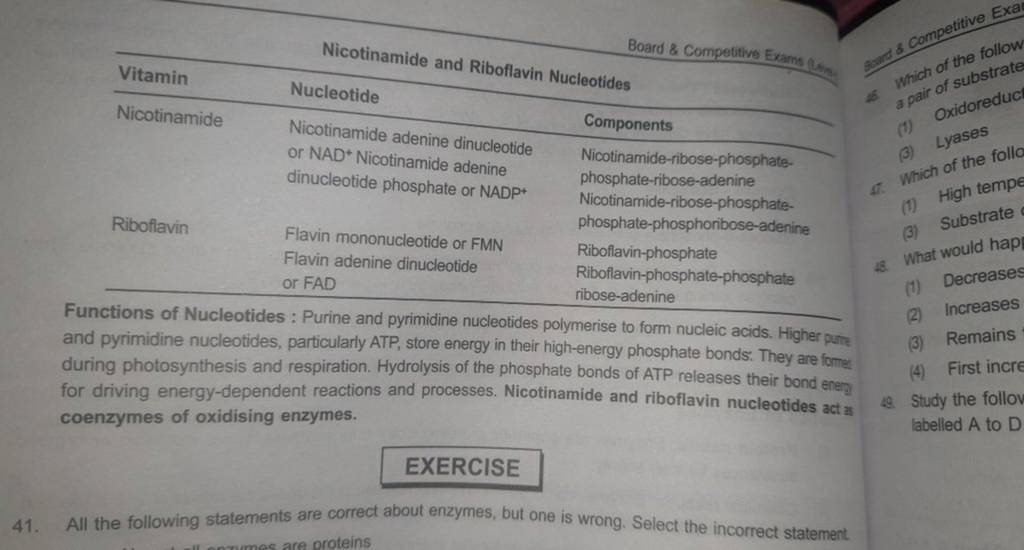Question
Question asked by Filo student

Functions of Nucleotides : Purine and pyrimidine nucleotides polymerise to form nucleic acids. Higher purte and pyrimidine nucleotides, particularly ATP, store energy in their high-energy phosphate bonds: They are forme: during photosynthesis and respiration. Hydrolysis of the phosphate bonds of ATP releases their bond enemg for driving energy-dependent reactions and processes. Nicotinamide and riboflavin nucleotides act as coenzymes of oxidising enzymes. EXERCISE 41. All the following statements are correct about enzymes, but one is wrong. Select the incorrect statement.
Found 2 tutors discussing this question
Discuss this question LIVE
14 mins ago

One destination to cover all your homework and assignment needs
Learn Practice Revision Succeed

Instant 1:1 help, 24x7
60, 000+ Expert tutors

Textbook solutions
Big idea maths, McGraw-Hill Education etc

Essay review
Get expert feedback on your essay

Schedule classes
High dosage tutoring from Dedicated 3 experts
Practice more questions on Cell: Structure and Functions
Question 1
Medium
Views: 6,349
Question 4
Easy
Views: 6,076
Students who ask this question also asked
Question 2
Views: 5,871
Question 3
Views: 6,040
Question 4
Views: 6,387


Stuck on the question or explanation?
Connect with our Biology tutors online and get step by step solution of this question.
231 students are taking LIVE classes
| Question Text | Functions of Nucleotides : Purine and pyrimidine nucleotides polymerise to form nucleic acids. Higher purte and pyrimidine nucleotides, particularly ATP, store energy in their high-energy phosphate bonds: They are forme: during photosynthesis and respiration. Hydrolysis of the phosphate bonds of ATP releases their bond enemg for driving energy-dependent reactions and processes. Nicotinamide and riboflavin nucleotides act as coenzymes of oxidising enzymes.
EXERCISE
41. All the following statements are correct about enzymes, but one is wrong. Select the incorrect statement.
|
| Updated On | Feb 8, 2023 |
| Topic | Cell: Structure and Functions |
| Subject | Biology |
| Class | Class 12 |
| Answer Type | Video solution: 1 |
| Upvotes | 104 |
| Avg. Video Duration | 16 min |



